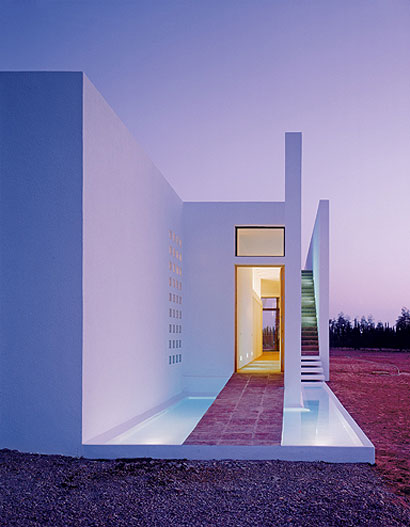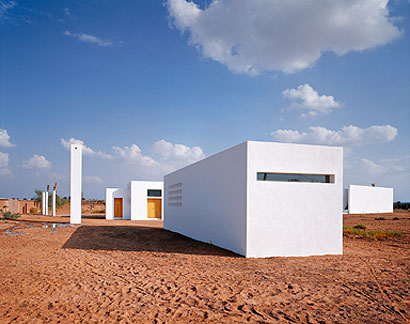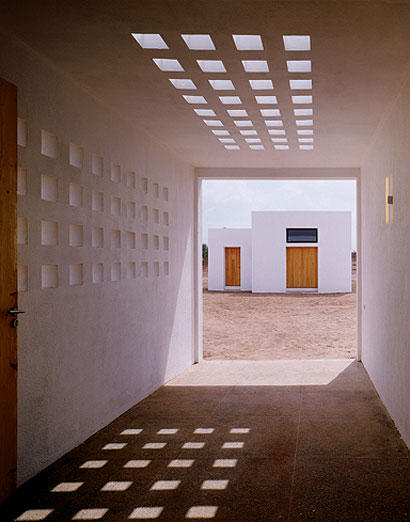|
|
||
|
Western homes in the east can be clunky affairs – all pastiche details and Disneyland gardens – but French architect Guilhem Eustache has created mystery in Morocco, with a house that hides behind white monolithic walls. The Fobe House was designed for, and with, Belgian filmmaker Dimitri de Clercq, who splits his time between Paris and this house – where his mother also lives. It’s just outside Marrakech on a largely barren six-acre plot, which was a challenge. How do you manipulate space, when there is so much of it? Eustache’s trick was to split the house into four buildings and scatter them around the site, creating inside-outside relationships between each. “I wanted to make the main passages exterior, so that even though the total built area is just 240sq m, the house feels bigger,” he says. “It also creates a relationship with the surrounding landscape.”
The main house contains two bedrooms and bathrooms, behind which is a pool and poolhouse. A garage and a guard’s house lie to the north, and four beacon-like columns light a path towards the front gate at night. The design is partly inspired by the cube-shaped clusters of Berber villages, but also bears striking similarities to more esoteric influences – none of them conscious. The dispersed rectangles are like Donald Judd’s field of concrete sculptures at the Chinati Foundation in Texas; the shadows are reminiscent of the giant sundials at the Jantar Mantar observatory in Jaipur, India; and a staircase rising out of the pool to nowhere would not look out of place in a landscape by surrealist forerunner Giorgio de Chirico. “The stairs lead the eye towards the Atlas Mountains in the distance, but they could lead further,” Eustache says. “For me, they could be a metaphor, a call to a state of dreaming.” To the more literal, they could be a place to dry off after a swim, which the architect is happy with. “I work with symbols, but they are also functional,” he says.
Appropriately, the space also incorporates cinematic contrasts. A narrow staircase enclosed by tall walls at the front opens on to a panoramic roof terrace. The living room lines up with the pool outside like a zoom lens. And the bedrooms and bathrooms are labyrinthine, with multiple entrances and exits. “I wanted people to experience the house as a series of possibilities,” Eustache says. So if the house were a film, which would it be? “Jean-Luc Godard’s classic, Contempt, is a great one, starring Villa Malaparte, with the stairs leading up to the roof,” de Clercq says. “Sometimes, when I look at the wall outside and let my mind wander, I imagine my favourite films being projected on it.”
|
Image Jean-Marie Monthiers
Words Luke Tebbutt |
|
|
||





















